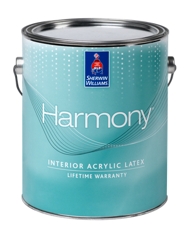Recycling Used Furniture and Other Home Items
When undertaking new decorating projects, clients always ask me
what to do with the castoff furniture and other unwanted items.
Rather than letting those items rot in a landfill, give them a
second life. Sometimes, you can even help someone in need at the same time.
Here’s a list of places in Omaha that I’ve used:
Hand Me-Ups -- Hand Me-Ups will send a truck to pick up
clean, gently used furniture items and leave you with a donation receipt for tax purposes. The stores are operated by
Angel Guardians, Inc., a Nebraska nonprofit
serving teenagers and adults with cognitive and developmental disabilities. For
more information, go to:
http://www.angelguardians.org/Hand_Me_Ups.html
Habitat ReStore -- You can donate leftover
building materials and home fixtures -- things like unused paint, extra floor
tiles or doorknobs -- to this discount retail outlet benefitting
Habitat
for Humanity. The ReStore donates 100 percent of proceeds to Habitat
for Humanity, a nonprofit that builds or renovates homes to build stronger
communities. There is one Habitat Omaha ReStore at 1003 S. 24th St. and a
second location is scheduled to open in summer 2012 one block north of 108th
and Maple Streets. If you can’t deliver your donated items to the store,
schedule a pick-up. ReStore accepts all home improvement items as long as they
are able to perform their designed purpose. For more information,
visit the ReStore website:
http://habitatomaha.org/support_habitat.asp
Yesterday’s Best Thrift Shop -- This thrift
store at 3569 Leavenworth accepts gently used men’s and women’s clothing,
kick-knacks, household items, collectibles, linens and books -- but no
furniture. Proceeds from sales of the items support the Assistance League of
Omaha’s philanthropic programs. There is no pick-up or delivery service, so
plan to drop off your items. For more information,
visit the Assistance League of Omaha’s website: http://omaha.assistanceleague.org/ps.yesterdaysbestthriftshop.cfm?ID=1385 (Full disclosure--I am a member of this organization and I can vouch for the quality of the donations sold at the thrift store!)
FreeCycle.org -- This website connects people in your community with
your unwanted items. Someone doing a craft project recently wanted broken terra
cotta pots. Another person sought twin mattresses, for example. My leftover
upholstery samples were taken by someone who made hammocks for rescued animals!
To participate, you’ll need to sign up as a member on the website. Then type in
your city and join that group. Everything posted must be free, legal and
appropriate for all ages.
http://www.freecycle.org
Under the Sink -- Douglas and Sarpy County
residents can dispose of lawn chemicals, motor oil and other hazardous waste at
the City of Omaha’s household hazardous waste facility at 4001 S. 120th St.
Many items are not accepted, such as batteries, old medicine and devices
containing mercury. Check out the
Under
the Sink website for hours and more information on what items will
and will not be accepted.
http://www.underthesink.org
EDT -- For 20-cents a pound (or 30-cents a
pound for televisions), EDT will recycle your old electronics. This business at
10330 I St. offers a drive-up and drop-off service the first and third Saturday
of every month. If you want the items picked up, it’s 35-cents a pound.
Electronics contain hazardous and
non-biodegradable materials that are released into the environment when
discarded in a landfill. EDT provides recycling services according to the
guidelines set by the Environmental Protection Agency. Check out the
EDT website for details:
http://edtshredding.com/electonic-recyling
Half
Price Books -- If your remodel project required decluttering, you
can take those books, music, movies, games, game consoles, e-readers and
audiobooks to Half Price Books. The store at 12355 W. Center Road pays cash for
these items. The price paid depends on condition and supply and demand.
Overstock items are donated to nonprofit agencies or recycled. For more
information, visit the
Half
Price Books website:
http://hpb.com
I hope this list and the recent blogs inspire you to
make earth-friendly decisions with your home decorating projects. If you want
to include environmentally responsible practices in your next home project, contact
me at
aboesen@decorandyou.com. As
a Green Accredited Professional through the Sustainable Furnishings Council, I
can help.
I promise my next blog will return to conversations about and photos of "pretty, shiny things". In the meantime, I'd love to hear about any recycling resources you use that are not mentioned here. Now, go forth into the world and decorate--AND recycle!

 The hotest color of the year is
tangerine, which means all shades of orange are popping up in every product,
including outdoor lounges, shades and rugs. Orange radiates warmth and energy. In either
indoor or outdoor settings, orange brings a sense of harmony, accenting the
natural greens of indoor plants or outdoor landscaping. It’s perfect for summer, and especially
striking when combined with other bright colors like turquoise, yellow and
bright green.
The hotest color of the year is
tangerine, which means all shades of orange are popping up in every product,
including outdoor lounges, shades and rugs. Orange radiates warmth and energy. In either
indoor or outdoor settings, orange brings a sense of harmony, accenting the
natural greens of indoor plants or outdoor landscaping. It’s perfect for summer, and especially
striking when combined with other bright colors like turquoise, yellow and
bright green.












.jpg)














